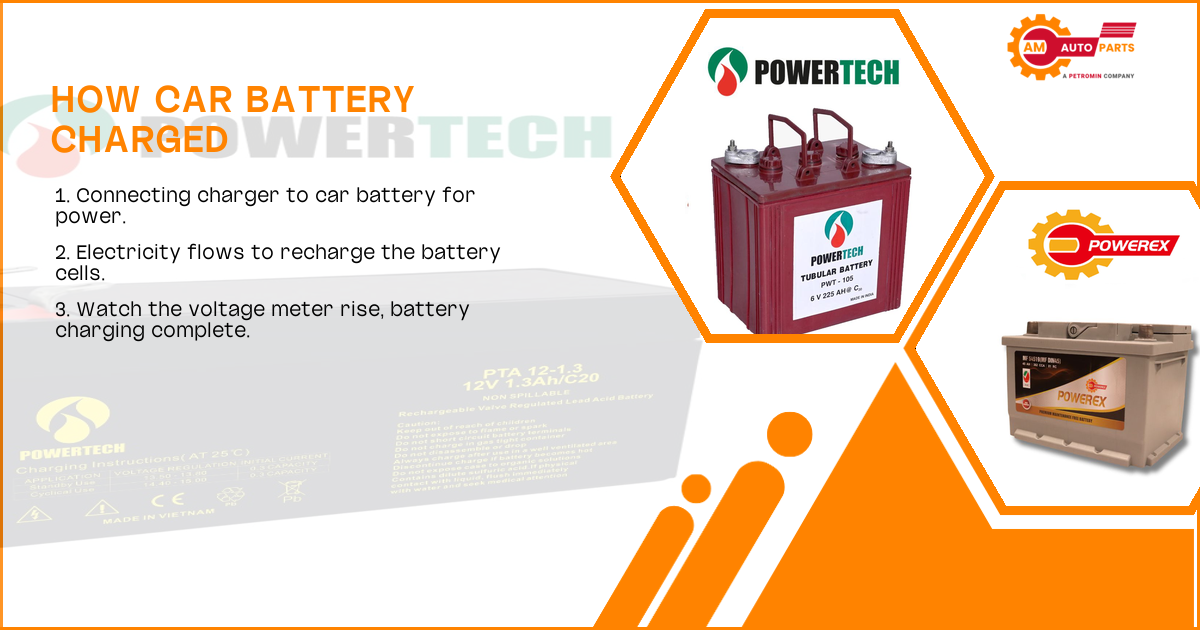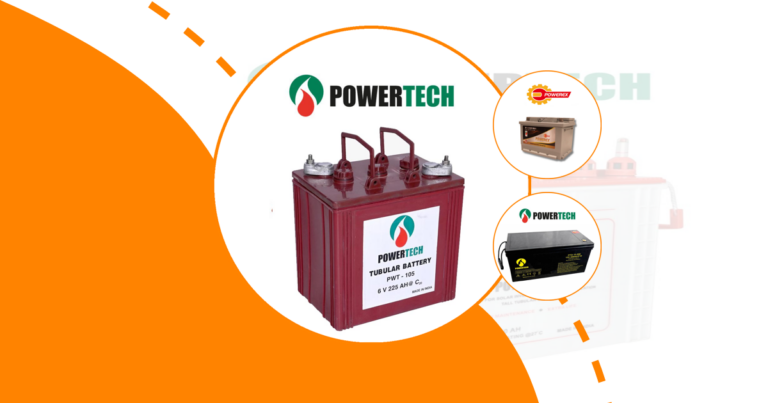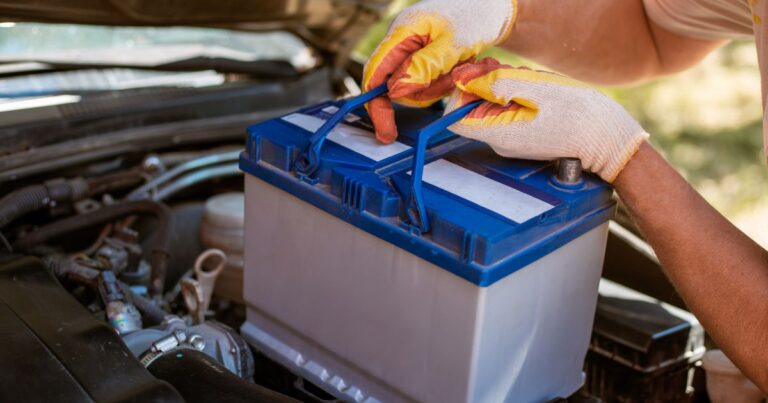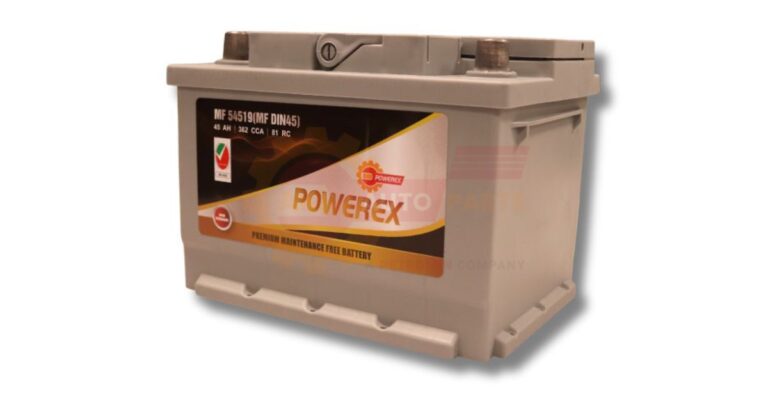How Car Battery Charge: An Comprehensive Guide
Understanding how car batteries charge is essential for every vehicle owner. A car battery is the heart of your vehicle’s electrical system, providing the necessary power to start the engine and run various electronic components. In this comprehensive guide, we will explore the intricacies of car battery charging, ensuring you have the knowledge to keep your vehicle running smoothly.
Understanding Car Battery Basics
Types of Car Batteries
Car batteries come in various types, each with its unique characteristics. The most common types include lead-acid, AGM (Absorbent Glass Mat), and lithium-ion batteries. Lead-acid batteries are the traditional choice, known for their reliability and affordability. AGM batteries offer enhanced performance and are maintenance-free, making them a popular choice for modern vehicles. Lithium-ion batteries, while less common in standard vehicles, are gaining popularity due to their lightweight and high energy density.
- Lead-acid batteries : Reliable and affordable
- AGM batteries : Maintenance-free with enhanced performance
- Lithium-ion batteries : Lightweight and high energy density
Battery Capacity and Voltage
Battery capacity and voltage are crucial factors in determining a battery’s performance. Capacity, measured in amp-hours (Ah), indicates how much energy a battery can store. Voltage, typically 12 volts for car batteries, represents the electrical potential. A higher capacity means longer-lasting power, while proper voltage ensures efficient operation of your vehicle’s electrical systems.
- Capacity : Measured in amp-hours (Ah)
- Voltage : Typically 12 volts for car batteries
Signs of a Weak or Dead Battery
Recognizing the signs of a weak or dead battery can prevent unexpected breakdowns. Common indicators include dim headlights, slow engine crank, and the battery warning light on your dashboard. If you notice any of these signs, it’s crucial to address the issue promptly to avoid being stranded.
- Dim headlights
- Slow engine crank
- Battery warning light
How to Charge a Car Battery Safely
Required Tools and Equipment
Charging a car battery safely requires specific tools and equipment. You’ll need a battery charger, safety goggles, gloves, and a well-ventilated area. A quality battery charger is essential for efficient charging, while safety gear protects you from potential hazards.
- Battery charger
- Safety goggles and gloves
- Well-ventilated area
Step-by-Step Charging Process
Charging a car battery involves a straightforward process. First, ensure the vehicle is turned off and the keys are removed. Connect the charger to the battery terminals, matching the positive and negative connections. Set the charger to the appropriate voltage and amperage, then turn it on. Monitor the charging process and disconnect the charger once the battery is fully charged.
- Turn off the vehicle and remove keys
- Connect charger to battery terminals
- Set charger to correct voltage and amperage
Safety Precautions During Charging
Safety is paramount when charging a car battery. Always wear protective gear and work in a well-ventilated area to avoid exposure to harmful gases. Ensure the charger is in good condition and follow the manufacturer’s instructions. Never smoke or use open flames near the battery, as it can emit flammable gases.
- Wear protective gear
- Work in a well-ventilated area
- Avoid open flames
Charging Methods for Car Batteries
Trickle Charging
Trickle charging is a slow and steady method of charging a car battery. It maintains the battery at its optimal charge level, preventing overcharging. This method is ideal for vehicles that are not used frequently, as it keeps the battery healthy over time.
- Slow and steady charging
- Prevents overcharging
- Ideal for infrequently used vehicles
Fast Charging
Fast charging provides a quick boost to a depleted battery. While convenient, it can generate heat and stress the battery, potentially reducing its lifespan. Use fast charging sparingly and only when necessary to avoid long-term damage.
- Quick boost to battery
- Generates heat and stress
- Use sparingly
Jump-Starting
Jump-starting is a temporary solution for a dead battery. It involves using another vehicle’s battery to start your car. While effective, it’s not a long-term fix and should be followed by a proper battery charge or replacement.
- Temporary solution
- Uses another vehicle’s battery
- Follow with proper charge or replacement
Maintaining Car Battery Health
Regular Battery Checks
Regular battery checks are essential for maintaining car battery health. Inspect the battery for signs of corrosion, leaks, or damage. Test the voltage regularly to ensure it’s within the optimal range.
- Inspect for corrosion and damage
- Test voltage regularly
- Ensure optimal range
Proper Storage Techniques
Proper storage techniques can extend a car battery’s lifespan. Store the battery in a cool, dry place away from direct sunlight. Disconnect the battery if the vehicle won’t be used for an extended period to prevent discharge.
- Store in a cool, dry place
- Avoid direct sunlight
- Disconnect for long-term storage
Extending Battery Life
Extending battery life involves adopting good habits. Avoid frequent short trips, as they don’t allow the battery to fully charge. Keep the battery terminals clean and ensure the charging system is functioning correctly.
- Avoid frequent short trips
- Keep terminals clean
- Ensure charging system works
Troubleshooting Common Car Battery Issues
Identifying Battery Problems
Identifying battery problems early can prevent more significant issues. Look for signs such as slow engine crank, dim lights, or a swollen battery case. Regular testing and inspection can help catch problems before they escalate.
- Slow engine crank
- Dim lights
- Swollen battery case
When to Replace vs. Recharge
Deciding when to replace or recharge a battery depends on its condition. If the battery is old and frequently loses charge, replacement may be necessary. However, if it’s relatively new and only occasionally discharges, a recharge might suffice.
- Old and frequently loses charge: Replace
- New and occasionally discharges: Recharge
Dealing with Corroded Terminals
Corroded terminals can impede a battery’s performance. Clean them with a mixture of baking soda and water, using a brush to remove corrosion. Regular maintenance can prevent terminal corrosion and ensure optimal battery function.
- Clean with baking soda and water
- Use a brush to remove corrosion
- Regular maintenance prevents issues
Environmental Factors Affecting Car Battery Charge
Temperature Impacts on Battery Performance
Temperature significantly impacts battery performance. Extreme heat can cause the battery fluid to evaporate, while cold temperatures can reduce its capacity. It’s essential to protect your battery from extreme weather conditions to maintain its efficiency.
- Extreme heat: Fluid evaporation
- Cold temperatures: Reduced capacity
- Protect from extreme weather
Effects of Humidity and Moisture
Humidity and moisture can lead to corrosion and battery damage. Ensure the battery is dry and clean, especially in humid climates. Regular inspections can help identify and address moisture-related issues.
- Corrosion and damage risk
- Keep battery dry and clean
- Regular inspections
Altitude Considerations
Altitude can affect a battery’s charging efficiency. Higher altitudes may reduce the battery’s ability to hold a charge due to lower air pressure. If you frequently drive in high-altitude areas, consider a battery designed for such conditions.
- Reduced charging efficiency
- Lower air pressure impact
- Consider high-altitude battery
Advanced Car Battery Charging Technologies
Smart Chargers and Their Benefits
Smart chargers offer advanced features for efficient battery charging. They automatically adjust the charging rate and shut off when the battery is fully charged, preventing overcharging. These chargers are ideal for maintaining battery health and extending lifespan.
- Automatic rate adjustment
- Prevents overcharging
- Maintains battery health
Solar-Powered Battery Maintainers
Solar-powered battery maintainers provide an eco-friendly charging solution. They use solar panels to keep the battery charged, making them ideal for vehicles stored outdoors. These maintainers are cost-effective and reduce reliance on traditional power sources.
- Eco-friendly charging
- Ideal for outdoor storage
- Cost-effective solution
Wireless Charging Innovations
Wireless charging innovations are revolutionizing battery maintenance. These systems eliminate the need for physical connections, offering convenience and reducing wear on battery terminals. While still emerging, wireless charging holds promise for the future of car battery technology. Battery components lead Lead is used in some batteries to help store and release energy it is an important part of many car batteries and other types of rechargeable batteries Battery selection guide Choose the right battery for your device by looking at size voltage and how long it lasts
Car battery voltage Battery replacement threshold is the point when a device’s battery becomes too weak and needs to be changed It helps users know when it’s time to get a new battery for their gadget Battery voltage range The
Push start automobile Cars with Electrical System Malfunctions happen when parts of the electrical system stop working properly
Automotive power choices include gas engines electric motors and hybrid systems These options give drivers different ways to power their cars and trucks
- Eliminates physical connections
- Reduces terminal wear
- Promising future technology
Recycling and Disposing of Car Batteries
Proper Disposal Methods
Proper disposal of car batteries is crucial for environmental protection. Batteries contain hazardous materials that can harm the environment if not disposed of correctly. Always take old batteries to designated recycling centers or automotive stores for safe disposal.
- Environmental protection
- Hazardous material handling
- Use designated recycling centers
Recycling Programs and Benefits
Recycling programs offer significant benefits for car battery disposal. They ensure that valuable materials are recovered and reused, reducing the need for new resources. Participating in recycling programs supports environmental sustainability and conserves natural resources.
- Material recovery and reuse
- Reduces need for new resources
- Supports sustainability
Environmental Impact of Battery Disposal
Improper battery disposal can have severe environmental impacts. Toxic chemicals can leach into the soil and water, harming wildlife and ecosystems. Responsible disposal and recycling help mitigate these risks and protect the environment.
- Toxic chemical leaching
- Harm to wildlife and ecosystems
- Mitigate risks through recycling
According to the U.S. Department of Energy, lead-acid batteries are the environmental success story of our time, with a recycling rate of 99% in the United States. This impressive statistic highlights the importance of responsible battery disposal and recycling efforts.
Frequently Asked Questions (FAQs)
How long does it take to charge a car battery?
Charging a car battery typically takes between 4 to 24 hours, depending on the charger’s amperage and the battery’s condition. A slow trickle charge may take longer, while a fast charge can significantly reduce the time. Always monitor the charging process to prevent overcharging.
Can you overcharge a car battery?
Yes, overcharging a car battery can occur if the charger is left connected for too long. This can lead to excessive heat and damage the battery’s internal components. Using a smart charger with an automatic shut-off feature can help prevent overcharging.
How often should you charge your car battery?
The frequency of charging a car battery depends on usage and driving habits. Regular driving typically keeps the battery charged, but infrequently used vehicles may require periodic charging. It’s advisable to check the battery’s voltage monthly and charge it if necessary.
What voltage should a fully charged car battery read?
A fully charged car battery should read approximately 12.6 volts or higher. This voltage indicates that the battery is in good condition and ready to power your vehicle. If the voltage is significantly lower, it may be time to charge or replace the battery.
Can you charge a car battery while still connected?
Yes, you can charge a car battery while it’s still connected to the vehicle. However, it’s essential to ensure the vehicle is turned off and the charger is set to the correct voltage. Charging while connected can be convenient but requires careful monitoring to avoid overcharging.






